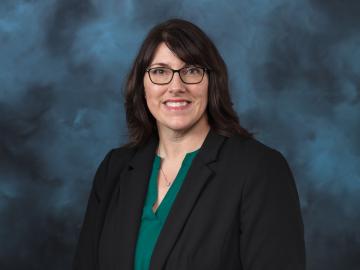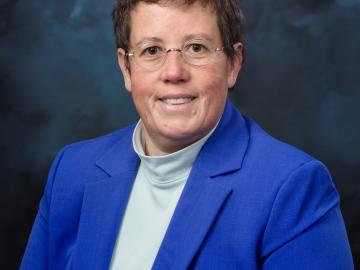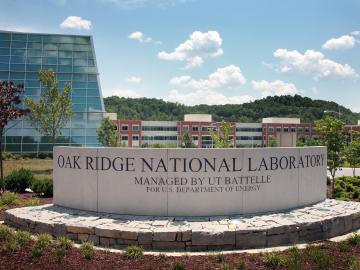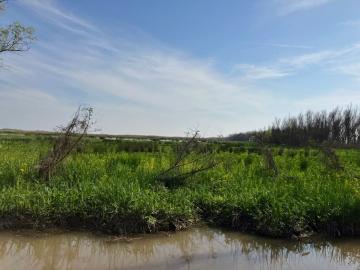
Filter News
Area of Research
- Advanced Manufacturing (3)
- Biology and Environment (39)
- Computational Biology (1)
- Computational Engineering (1)
- Computer Science (2)
- Electricity and Smart Grid (1)
- Energy Science (39)
- Functional Materials for Energy (1)
- Fusion and Fission (5)
- Fusion Energy (7)
- Isotopes (7)
- Materials (42)
- Materials for Computing (8)
- Mathematics (1)
- National Security (5)
- Neutron Science (10)
- Nuclear Science and Technology (9)
- Nuclear Systems Modeling, Simulation and Validation (1)
- Quantum information Science (1)
- Supercomputing (21)
News Type
News Topics
- (-) Advanced Reactors (18)
- (-) Biology (31)
- (-) Cybersecurity (9)
- (-) Environment (67)
- (-) Isotopes (15)
- (-) Microscopy (21)
- (-) Nanotechnology (25)
- (-) Polymers (15)
- (-) Space Exploration (11)
- (-) Summit (11)
- 3-D Printing/Advanced Manufacturing (57)
- Artificial Intelligence (33)
- Big Data (26)
- Bioenergy (26)
- Biomedical (18)
- Biotechnology (6)
- Buildings (31)
- Chemical Sciences (31)
- Clean Water (14)
- Composites (16)
- Computer Science (70)
- Coronavirus (15)
- Critical Materials (13)
- Emergency (2)
- Energy Storage (50)
- Exascale Computing (11)
- Fossil Energy (1)
- Frontier (10)
- Fusion (19)
- Grid (28)
- High-Performance Computing (33)
- Hydropower (6)
- Irradiation (3)
- ITER (5)
- Machine Learning (19)
- Materials (70)
- Materials Science (54)
- Mathematics (3)
- Mercury (3)
- Molten Salt (6)
- National Security (13)
- Neutron Science (42)
- Nuclear Energy (36)
- Partnerships (11)
- Physics (11)
- Quantum Computing (9)
- Quantum Science (18)
- Security (4)
- Simulation (16)
- Software (1)
- Statistics (1)
- Transportation (52)
Media Contacts

Erin Webb, lead for the Bioresources Science and Engineering group at Oak Ridge National Laboratory, has been elected a Fellow of the American Society of Agricultural and Biological Engineers — the society’s highest honor.

Oak Ridge National Laboratory scientists ingeniously created a sustainable, soft material by combining rubber with woody reinforcements and incorporating “smart” linkages between the components that unlock on demand.

Lætitia H. Delmau, a distinguished researcher and radiochemist at Oak Ridge National Laboratory, has received the 2024 Glenn T. Seaborg Actinide Separations Award.

Groundwater withdrawals are expected to peak in about one-third of the world’s basins by 2050, potentially triggering significant trade and agriculture shifts, a new analysis finds.

Rigoberto “Gobet” Advincula, a scientist with joint appointments at ORNL and the University of Tennessee, has been named a Fellow of the American Institute for Medical and Biological Engineering.

Two different teams that included Oak Ridge National Laboratory employees were honored Feb. 20 with Secretary’s Honor Achievement Awards from the Department of Energy. This is DOE's highest form of employee recognition.

ORNL climate modeling expertise contributed to a project that assessed global emissions of ammonia from croplands now and in a warmer future, while also identifying solutions tuned to local growing conditions.

Scientists at the Department of Energy’s Oak Ridge National Laboratory are using a new modeling framework in conjunction with data collected from marshes in the Mississippi Delta to improve predictions of climate-warming methane and nitrous oxide.

ORNL Environmental Sciences Division Director Eric Pierce presented the division’s 2023 Distinguished Achievement Awards at the organization’s December all-hands meeting.

Anne Campbell, a researcher at ORNL, recently won the Young Leaders Professional Development Award from the Minerals, Metals & Materials Society, or TMS, and has been chosen as the first recipient of the Young Leaders International Scholar Program award from TMS and the Korean Institute of Metals and Materials, or KIM.


